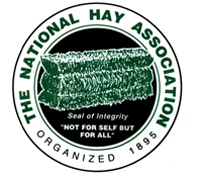As the world has sadly learned, innocent children in China have suffered as a result of tainted milk products. The cause of the illnesses and a few fatalities is apparently traced to the chemical melamine, known to falsely inflate protein levels of watered-down milk. Essentially, a small dairyman sells his milk to a milk collector who, in turn, sells the milk to a dairy producer for processing, packaging, and marketing to consumers. Somewhere in the supply chain, water and melamine were added to the raw milk to increase both volume and profits.
Though only 10% of liquid milk was discovered to have been tainted with melamine, dairy producers and farmers were reportedly dumping all their liquid milk stores. By some accounts, dairy cows were being slaughtered while feed and fodder supplies were being buried in trenches. Such activities suggest the cows themselves were tainted and that melamine might have been added to feed supplies. The idea of introducing this chemical to an animal through feed is unfathomable.
On one hand, melamine contamination could have taken place after milking but before the raw milk was sold to a collector or processor. If this was the case, the collector or processor would want to test the raw milk for the presence of melamine. Most likely, dairy processors were acutely aware of how melamine might be used to fool a quality control test. Further, quality control standards in milk manufacturing would indicate melamine testing. On the other hand, the milk could have become contaminated after leaving the factory–a far scarier circumstance.
These questions will be answered in due time. Until then, where will China get milk?
In recent years, China has seen astronomical increases in demand for milk and dairy products from its burgeoning population. In the last week since melamine tainted milk made headlines, countries around the globe have already seen increased orders from China, especially for milk powder for infants. Some say this demand increase from China is temporary, but we must understand and be prepared for prolonged lack of consumer confidence among Chinese citizens toward their largest dairy producers.
China needs milk. Some countries are close enough in proximity to supply China’s need for liquid pasteurized milk. With an approximate two week shelf-life, fresh milk should be able to make it from established, reputable dairy processors from other countries to Chinese grocery stores with at least 10 days to spare. Now is the time for these modern, high-tech dairies to increase production and enter the Chinese milk market–ACX will certainly support such noble efforts to the best of our ability.
The Chinese milk situation is tragic. We can point fingers, cast blame, look for conspiracy theories, and bring the guilty to justice. However, international industry leaders should be willing to help China learn from these mistakes; hopefully, China be willing to accept the help so the mechanisms to prevent a future tragedy in their dairy industry can be established. Ultimately, Chinese consumer confidence in China’s dairy producers will be restored, but, most important, we must not fail to support our fellow human beings who need milk.
 ACX アドバイザー
ACX アドバイザー ACX 인사말
ACX 인사말 ACX 快讯
ACX 快讯
